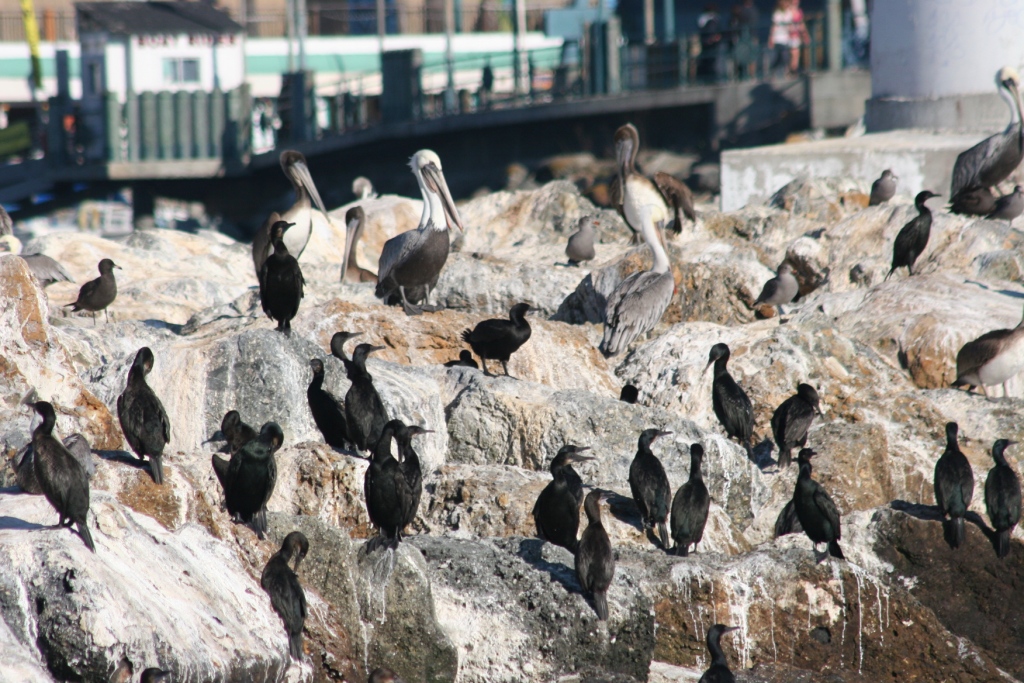
Brandt’s cormorants and brown pelicans
During a visit to a Southern California beach, there’s a very good chance you’ll see a mostly black bird. This bird is most likely a cormorant and it’s often spotted sitting with California brown pelicans and various gulls hanging out on rocks. From a boat, they are frequently seen flying just above the surface of the water or they’ll pop up with just their heads sticking above the surface, like a bird periscope, which always cracks me up.
Here are five quick cormorant facts:
1. It’s possible to see three different species of cormorants in Southern California: the Brandt’s cormorant (looks completely black from a distance), the double-breasted cormorant (has a yellow-orange beak offset by a black body) and the pelagic cormorant (shiny black with a very thin neck).
2. Cormorants are the deepest diving birds in Southern California and can dive 120 to 300 feet deep (the numbers vary in different reference books).
3. They are excellent fisherbirds, in fact they are so good at catching fish that cormorant species in Asia (there are approximately 37 cormorant species in the world) have been trained to catch fish for people. For every seven fish they catch, the cormorant gets to eat one.
4. Cormorants do not have waterproof feathers. It turns out that waterproof feathers stink for diving, so instead cormorants kept feathers that are easily waterlogged to help them sink and dive faster. This is why you’ll often see them with just their heads sticking out of the water because their feathers are waterlogged and weighing them down and you’ll also see them sitting on rocks with their wings spread out drying their wet feathers.
5. After eating, cormorants regurgitate pellets containing indigestible fish bones and animal parts just like barn owls regurgitate mouse bones.
Interesting article, Carolyn. Another cool fact is the Double-crested Cormorant can perform CPR and give mouth-to-mouth resuscitation to help save lives. See photo.
http://MichaelDanielHo.com/cormoran11.jpg
Barn owls regurgitate mouse bones? Wow, now I know something about them, too! Thanks, OWT!
So cool I needed this for my agsiment
good
On average fast can a cormorant fly?
Hi Don, According to this website: http://ec.europa.eu/environment/nature/cormorants/faq.htm cormorants can fly approximately 33 mph, which is considered a medium speed for a bird.
Love this website. 5 stars.
I’ve seen double-crested cormorants flying with open beaks. Do you know why?
Hi Kate, Great question! Many apologies, but I don’t know the answer to that one.
Great website! Intelligent idea.
I am doing a project in class about cormorant and i love them i hope you bring out more cool fun facts about cormorant!
I AM DOING A ANIMAL PROJECT AS WELL AND THIS SITE WAS USEFUL